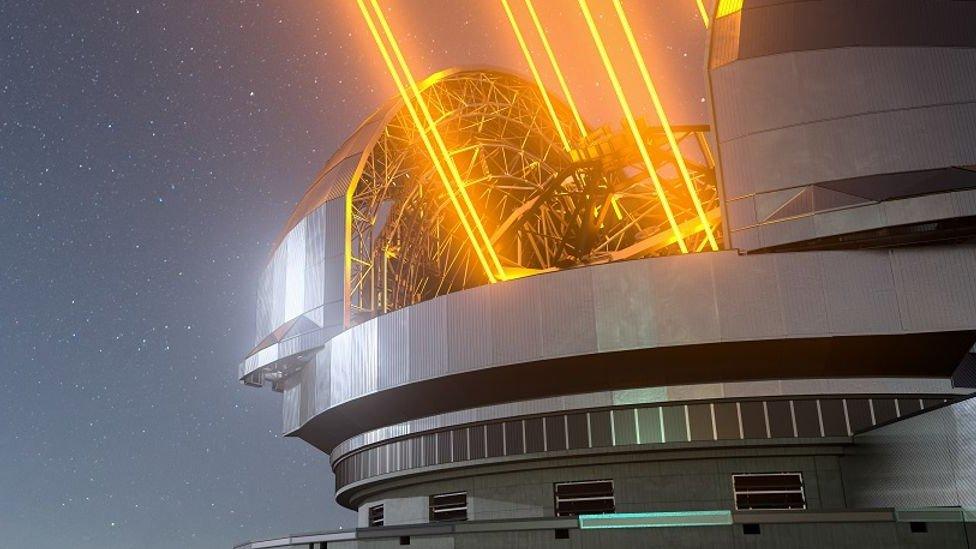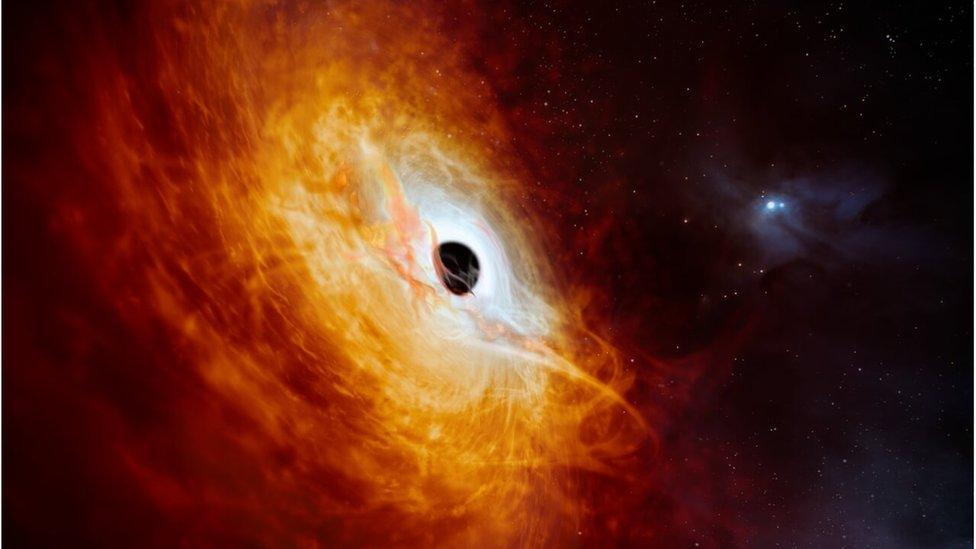Astrocomb: Scientists developing tech with hope of finding new Earth-like planets
- Published
- comments

An artists interpretation of the Extremely Large Telescope (ELT) being developed in Chile
Hidden planets similar to Earth may not stay hidden for much longer.
Scientists have been working on developing and improving a laser system called astrocomb, which they hope will help them reveal more secrets of the universe - by "combing" through the universe's starlight in a more advanced way.
Stars and planets are often spotted using light and sound waves, and the astrocomb allows astronomers to see tiny changes in the colour of starlight.
This will allow them to 'comb' for more starlight and learn more about the galaxy.

It's thought the tech could mean hidden planets similar to Earth could be found
Previously scientists could only study the green-red part of the colour spectrum but now physicists from Heriot-Watt University and Cambridge University have made a technological breakthrough allowing them to see the ultraviolet to blue-green part of the spectrum too.
Researchers hope that not only will new planets be revealed but we could find out more about how the universe expands.
The team is making the technology for the Extremely Large Telescope currently being developed in Chile.
Dr Samantha Thompson, an astrophysics senior research associate at Cambridge, added: "This is a really exciting development that will enable us to study smaller planets on longer orbits than ever before - with the aim of discovering the first 'Earth-like' planet orbiting around a nearby Sun-like star."
- Published22 February 2024

- Published25 February 2024

- Published20 February 2024

